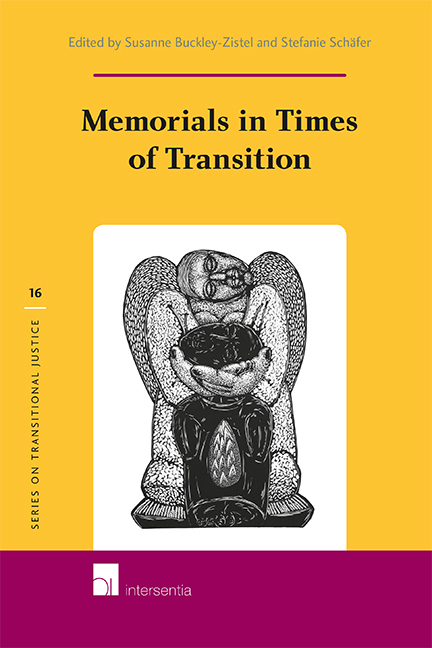Chapter 8 - Memorials, Memorialisation and Social Action in Santiago de Chile
Published online by Cambridge University Press: 16 December 2020
Summary
When visiting Santiago de Chile in 2010, I encountered a new dimension to memorialisation efforts related to the military dictatorship: photo books of monuments and memorials. In a café close to La Moneda, an interviewee pointed out to me that a book had been published on monuments and memorials in Chile. I thought she was referring to a book published in 2007 by the Ministry of National Property, Memoriales en Chile. Homenajes a las Víctimas de Violaciones de Derechos Humanos. On the contrary, she was referring to a book from the Ministry of Housing and Urbanism published in October 2009, entitled Memorias de la Cuidad. Registro de Memoriales de Detenidos Desaparecidos y Ejecutados Políticos, Región Metropolitana; a full colour, hard back publication, full of pictures and explanatory texts. A few days later a friend offered to show me “a new book on monuments and memorials”. To my surprise she presented yet another book, this time published in January 2010 by the Program of Human Rights of the Ministry of Interior, entitled Geografía de la Memoria; also a full colour hardback with images of memorials.
The books differ somewhat in approach and focus, yet their introductions all refer to a culture of human rights, to the dictum ‘never again’, to democracy and a just society, and crucially, to the importance of memory in each of these. The series of images depict monuments and memorials in Chile, especially in its capital Santiago – some well-known and used as active memory places, others less known and half-forgotten. These monuments and memorials were created at different points in time by a wide variety of actors, and invite to reflect on the dynamics behind the memory landscape of Santiago: who undertakes these memory initiatives? What narratives do they want to convey? What are their struggles? Or more generally: how should we understand processes of memorialisation?
- Type
- Chapter
- Information
- Memorials in Times of Transition , pp. 199 - 220Publisher: IntersentiaPrint publication year: 2014
- 1
- Cited by



